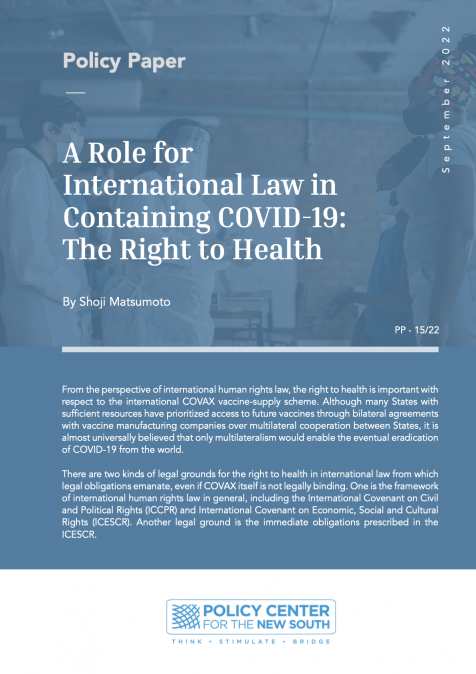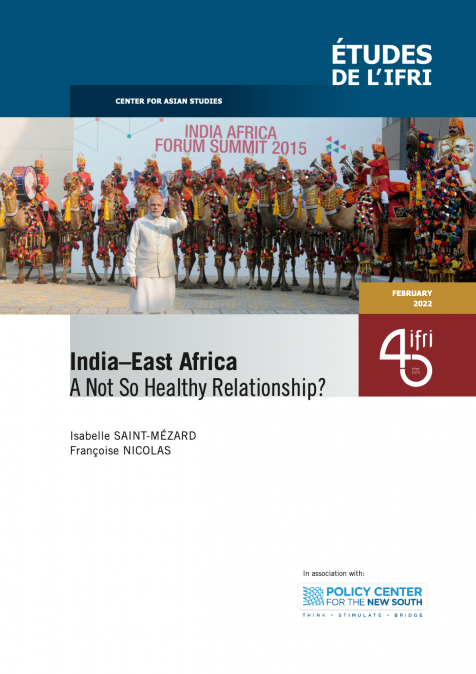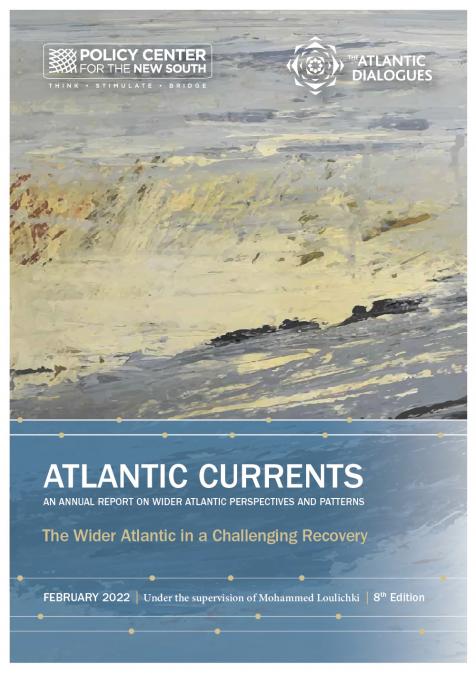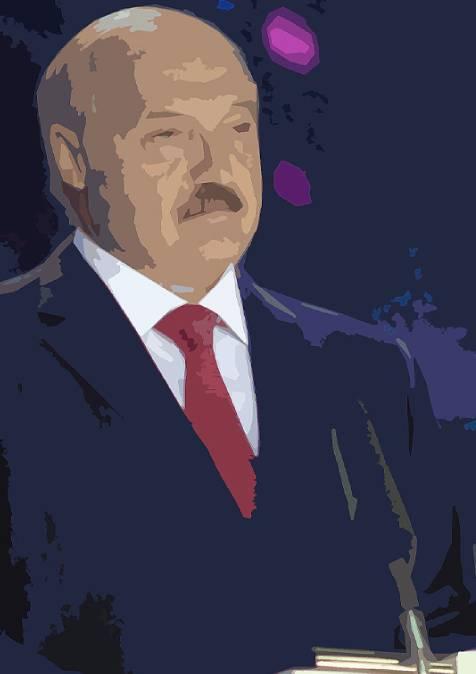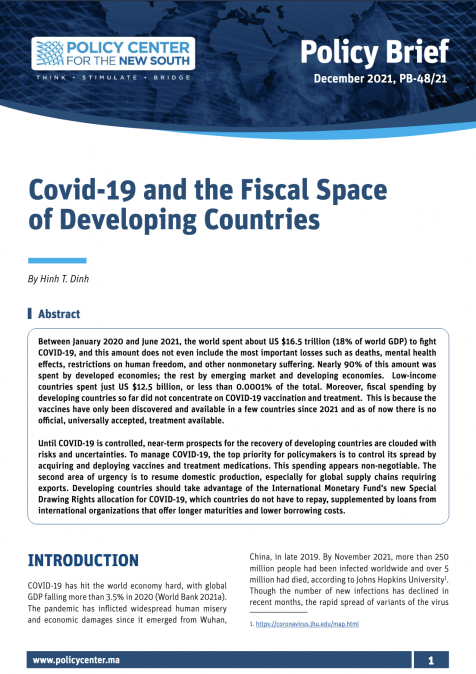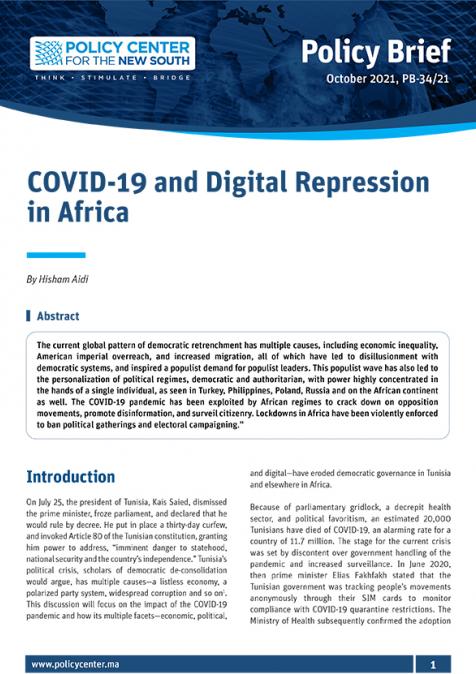Publications /
Opinion
Epidemics are hardly a novelty. They have been shaping, mapping, and fundamentally altering human history from time immemorial. Exposing national vulnerabilities and feeding off poverty and insecurity, diseases have consistently threatened human and homeland security.
Paradoxically, while globalization has helped concentrate global scientific efforts and disseminate ever more rapidly technologies and knowledge production, it has also significantly increased global interconnectedness and co-dependency, transmuting disease outbreaks from local events to international catastrophes. Bacteria and viruses can travel farther and more rapidly than ever before through porous borders, facilitated by the advent of the global air mobility era. The human security paradigm shift in the mid-90s acknowledged the complex interlinkages tying health security to political and economic security, thereby raising concerns about the potential of a single pandemic to bring even the most powerful nations to their knees.
Unpredictable pandemics constitute black swan events with the potential to severely erode market confidence and state capacities, triggering crises of political faith that can be hard to recover from. It is, therefore, unsurprising to witness the surge of alarmism and panic in the wake of the novel coronavirus 2019 (COVID-2019), which has infected about 80,000 individuals worldwide and has officially exceeded the threshold of 2704 deaths. Media alarmism has been particularly accentuated after a first case of the disease was declared on African soil. With no vaccine or treatment in sight, and as COVID-2019 appears on the brink of developing into a full-fledged pandemic, it is particularly important to shed light on the extent to which it acts as a disturbing force threatening political and socio-economic stability.
Reminiscing previous coronavirus epidemics
Novel coronavirus 2019 is only novel by name, for similar viral infections have been subjecting humans to illness and death for millennia, albeit to varying degrees. Almost 18 years ago, another strain of coronavirus was slowly making a name for itself, under the form of a highly infectious respiratory disease known as the Severe Acute Respiratory Syndrome (SARS). SARS first appeared in 2002 in China, similarly to the current epidemic, rapidly turning from a local outbreak confined to mainland China to a global pandemic. It infected about 8,000 people worldwide, causing 774 deaths, and draining global finances stretched by the need to not only contain and monitor the disease, but also develop the systemic capacity to treat infected patients. The pandemic was eventually halted and there have been no new SARS cases since 2004. A few years later, in 2012, the Middle East Respiratory Syndrome (MERS) emerged as yet another member of the coronavirus family, infecting about 2,400 people across 27 different countries and causing 850 deaths.
The number of cases reported for the previously unknown COVID-2019 strain far exceeds those reported for the two previous diseases combined. The first symptomatic case appeared in the central Chinese city of Wuhan in early December 2019, as a then seemingly inexplicable infection causing high fever and respiratory symptoms. Several cases followed, the similarity of which promptly alerted public health officials. A few weeks afterwards, on December 31st, Chinese authorities reported the disease outbreak to the World Health Organization (WHO). At that point, little was known about the lethality or virulence of what closely resembled seasonal flu, but investigations rapidly showed that similarly to the other strands of coronavirus, COVID-2019 found its roots in wild animal markets. The emergence of the viral infection was more specifically traced back to the Wuhan’s wholesale seafood market, designated by Chinese authorities as the epicentre of the epidemic. The virus was found to spread through close human contact, especially when an infected individual is coughing or sneezing. This is a worrying feature given China’s population density and role as an international hub, and one that has undeniably contributed to speeding the propagation of the epidemic well beyond the country. The number of coronavirus cases has indeed dramatically increased over the last couple of weeks, amounting to about more than 80,000 cases reported across 29 countries, 77,000 of which are concentrated in mainland China alone. Uncertainty remains as to whether the global reported number of cases is reflective of reality, or if it rather translates weak testing capacities and political desire to contain fear.

As of February 25th, around 2700 deaths have been attributed to COVID-2019. Although 25% of reported infected individuals have recovered, the lack of vaccine or tailored treatment is likely to continue fostering the number of cases and of deaths. Yet, while the number of deaths estimated to have been caused by COVID-2019 has officially surpassed those recorded for SARS and MERS, the disease maintains a significantly lower fatality rate in function of the total number of cases. For comparison, MERS had a fatality rate of 35% and SARS of 9.6%, whereas the novel coronavirus’s fatality rate still averages 2%. To further put things in perspective, for every 50 people infected, 17 would die from MERS, 5 from SARS, and about one from the novel coronavirus. This does not, however, diminish the need to take the outbreak seriously and to implement the measures needed to ensure minimum contagion. Not only is there an ethical and humane imperative to protect as many people as possible from the suffering and stigma inherently associated with the disease, but it is also still too soon to assume COVID-2019’s current fatality rate will remain steady, especially since the virus has spread significantly faster than SARS. With an incubation period lasting up to 14 days, COVID-2019 hosts can pass it on to others before presenting any symptoms, raising consequent concerns about the extent to which the outbreak can be contained.
Source: Reuters. (2020). Comparing Outbreaks.
COVID-2019 and the containment Crisis
The novel coronavirus has emerged in an unprecedented context of interconnectedness and interdependency. At the height of globalization, diseases transcend national boundaries and indiscriminately transgress borders. Modern air travel, facilitated human mobility, and ecological as well as environmental degradation resulting from human activity, are all factors that allow infectious diseases to spread further more easily. Nowadays, China constitutes the nucleus of this economic globalization and has morphed into an international hub featuring major airports connecting the country to hundreds of other destinations. Any epidemic that strikes the country will ultimately find a way out. Although about 50 million people in China are affected by a lockdown as the government attempts to minimise population movements, it would be whimsical to believe that COVID-2019 can be quarantined. It will be pragmatically and ethically impossible to completely halt the movement of populations for a long period of time. If anything, the quarantine of cruise ships amidst the COVID-2019 storm has demonstrated the limits of such confinement procedures, with healthy crew members and passengers left vulnerable to infection. With the mounting number of cases declared in North America, Europe, and the Middle East, tracing the contacts and whereabouts of each infected person will become increasingly difficult, complicating the control and containment of the disease.
While the outbreak of the new coronavirus has yet to reach pandemic levels, it is likely to have an indiscriminate global impact. Beyond the direct human and economic costs associated with the propagation of the disease, the economic and political disruptions agitating China reverberate across continents and countries, exacerbating unresolved tensions. The Chinese economy is much more central to the world economy in 2020 than it was in 2003- representing today 16.3% of the world’s GDP-, but also far more vulnerable. The novel coronavirus has emerged against the backdrop of a fragile Chinese economy, following a period of slowing growth and a tense trade war with the United States, ill-equipped to absorb the shock of a protracted epidemic. Within two decades, China has grown to rely more heavily on internal demand and service industries, making it substantially more difficult to recover from sluggish demand. The disease outbreak has forcefully inhibited consumer demand, which is expected to continue plunging as the epidemic spreads, at a critical time of the year during which entertainment and hospitality businesses usually realise a large part of their annual revenues. In parallel, fear from food shortages in quarantined cities has sustained surging food prices. Consequently, consumer price inflation is at its highest since 2011, averaging 5.4% in January. To stimulate the economy and lessen the impacts of the epidemic, China’s central bank has pledged to inject 174 billion USD into the national economy. It has also vowed to invest about 43 billion USD to help respond to the health crisis and build or strengthen the health infrastructure needed to cater for the dramatic increase in COVID-2019 cases.
Regardless, industries based in China are likely to suffer from the many restraints and containment measures, as well as from the deeply disrupted global supply chain relying on Chinese manufacturing. Major multinational companies such as Hyundai and Apple have either completely ceased or significantly slowed down their production in Chinese provinces, with significant repercussions on both market confidence and national demand for raw exports and energy. As China represents Africa’s largest trading partner, African countries are likely to be severely hit in case their mineral and agricultural exports to China- including oil, cotton, and copper- shrink over the following months. Similarly, the suspension of flights to and from China is not only jeopardising the booming tourism industry in African countries such as Morocco, Kenya, and Mauritius, but also widening the gap between the supply and demand of jet fuel at a time when oil prices are already depressed. As a result, global commodity prices are tumbling and distressing global producers.
These economic turbulences cannot be dissociated from the political stability of China, affected countries, and the world more generally, for the biological is deeply intertwined with the social and political health of nations. Waves of panic have powered national public anger and distrust over the seemingly hesitant initial response to the outbreak, especially in light of the previous miscommunication during the SARS epidemic. The initial lack of transparency in 2003 sparked backlash in China and drew heavy criticism from foreign governments and the WHO, leading to the dismissal of the then health minister and the Beijing mayor over the mishandling of the outbreak. Despite the relatively significant effort to contain the recent outbreak and develop the systemic capacity to take care of all infected people, domestic unrest and fear seem ever more present in China. Chinese officials have had to reassure citizens about their active efforts to alleviate the shortage of medical and food supplies, the prices of which have increased exponentially over the last weeks. This crisis of political faith seems in many ways unavoidable, for disease outbreaks have the peculiar singularity of reviving grievances and often prove to be extensive tests for political leadership and governance. The mismanagement of outbreaks usually carries significant political cost as it calls into question the legitimacy and competence of the regime and opens the door for opposition voices to formulate alternatives that can rapidly gain traction among fearful populations.
In addition to increasing death and disability rates, infectious diseases nurture fear, jeopardise stability, and deplete state resources and capacity. By stunting long-term economic growth and impeding good governance, health insecurity threatens the political and socio-economic stability of states. Not only are funds diverted from other sectors to manage the public health crisis, but productivity also dwindles because of absenteeism and a decrease of the available workforce. This further reduces public confidence and weakens state authority, particularly when interlinked socio-economic stress factors contribute to deepening social fragmentation and antagonizing citizens from the state. Consequently, the way public health and national authorities respond to the crisis will be pivotal to future political development both within and outside China.
Africa’s vulnerability and preparedness to COVID-2019
Cognisant of the human, political, and financial costs associated with the disease, the WHO has declared the novel coronavirus a Public Health Emergency of International Concern, confirming global suspicions about the severity of the outbreak. While the WHO has insisted that there were not enough reasons to “interfere with international travel and trade”, countries are unilaterally suspending flights to China, closing borders, and evacuating citizens from Chinese provinces to minimise risks of contagion. Yet, several media have raised the concern that these measures might prove to be useless in case the disease eventually reaches the African continent, deemed by many as most vulnerable and most likely to fail at containing epidemics. The first COVID 2019 case declared in Egypt on February 14th has compellingly substantiated these worries, as it became clear that COVID 2019 has officially permeated Africa’s frontiers.
The threat of the coronavirus is an undeniable source of political anxiety for African countries. With the deepening of Sino-African ties carried by China’s developmental engagement towards Africa and grand BRI strategy, Chinese investments have soared in several countries and have been accompanied by a consequential increase in trade and human mobility across the Asian and African continents. Africa is currently estimated to host about 1 million Chinese citizens, some of whom might have recently travelled or been in direct contact with other members of the diaspora that have. On the other hand, about 81,000 African students are settled in China. This has fuelled the 600% increase in flights connecting China to African countries over the last few years, which multiplies entry points through which the COVID-2019 outbreak could spread and challenge local capacities to diagnose and treat cases. Africa thus faces an unprecedented conundrum. Unlike western powers, there is an underlying power dynamic at play between several African countries and China, whereby the risk of alienating the Chinese government and causing diplomatic tensions by hardening borders dissuades countries from enforcing such measures. By the same token, evacuating African citizens from Hubei is both financially and politically costly. Ensuring all evacuated citizens are quarantined upon their return to their home countries poses its own logistical challenges, as it requires adequate health facilities and trained personnel. So far, only a few African countries including Morocco, Algeria, and Mauritius, have managed to repatriate their students from affected parts of China while enforcing continuous monitoring and surveillance.
Several African countries have health systems that are overwhelmed by the double burden of communicable and non-communicable diseases and obstructed by gradual privatisation. These systems would be strongly challenged by the quarantine of hundreds or more suspected cases. Lower respiratory infectious diseases, HIV/AIDS, and diarrhoeal diseases still represent the top causes for mortality and morbidity, against the backdrop of rampant disease outbreaks including tuberculosis, measles, and malaria. Although the overall average healthy life expectancy in Africa is on an upward trend, increasing from 50.9 to 53.8 years between 2012 and 2015, it is still characterized by strong inequalities between and within countries in the region[1]. Access to health services is often determined by other socio-economic or political factors, with poverty and insecurity being some of the greatest obstacles. An epidemic such as coronavirus could erode individual resilience, accentuate pressure on access to health services, and stir further instability.
For many then, Africa is poised to be the weakest chain in global containment efforts. Yet, the narrative about Africa’s vulnerability and weakness once again fails to grasp that the continent is exactly that, a continent with different political, economic, and health systems, each endowed with different levels of resilience. It is fragile states torn by conflict, political instability, or grave poverty that are less resilient and more vulnerable to shocks. Other African countries have undergone dramatic improvements in the development of a more robust disease surveillance and monitoring apparatus, whereby mainly due to the mobilisation of resources and capacities during the Ebola outbreak, several governments already possess enhanced screenings and trained health workers at airports. More importantly, previous epidemic experiences characterised by strong multilateral coordination have also helped Africa develop greater responsiveness to impeding threats. While at the start of the current health crisis only two labs across the WHO’s delimited African region could test for coronavirus, the organisation has recently confirmed that 17 countries within the region could now test for COVID-2019. This number excludes other countries on the continent that possess adequate diagnostic capacities, such as Morocco and Egypt, both of which are part of the WHO’s Eastern Mediterranean region. Surely, this is relatively insufficient to control a potential epidemic, since more than 40 countries are left ill-equipped to diagnose, let alone treat the disease, but demonstrates that concentrated multilateral financial and political effort can rapidly translate into actual improvements. During the meeting of the African Union’s Peace and Security Council held February 13th, Morocco stressed the need for the urgent coordination of collective action in Africa, including the development of a preventive strategy and the establishment of a special fund to counter the epidemic. The WHO is also scaling up preparedness efforts in the region by dispatching experts to countries at higher risk and collaborating to increase surveillance and detection capacities. Yet, these efforts come at substantial cost. Although the Bill and Melinda Gates Foundation has already pledged 100 million USD to help combat the virus, the WHO estimates that about 675 million USD will be needed to assist poorer countries with less resilient health systems and protect them from the epidemic.
This draws attention to the prime importance of developing the overall resilience of African health systems. Multilateral efforts need to be sustained year-long for their sheer intrinsic value and not only in the face of rogue epidemics that are unlikely to cause as much mortality and morbidity as more prevalent diseases in the region. This is particularly true since, even if not much is currently known about the lethality and virulence of COVID-2019, experts evaluate it is less likely to survive in the hostile warm environment of Africa than in colder regions.
Overcoming fear and embracing global solidarity
It is unsurprising that the international community views the COVID-2019 outbreak as an existential threat. The salience of health as a geopolitical issue reflects growing fear from the destabilising potential of diseases on any given state, which in an intricately interdependent world can rapidly propagate and affect others. It is, however, crucial to not let individual national interests and fears trump the need to consolidate global solidarity in response to the epidemic. We ought to dissociate containment efforts driven by pragmatism from xenophobic attitudes towards the Asian community driven by irrational fear. The latter can be detrimental to the former by alienating billions of people unjustly associated with the disease and deterring them from seeking appropriate care. Solidarity is ever more needed since states do not share similar systemic resilience, nor the same capacity to prevent, detect, contain, and treat cases. Some vulnerable countries lack the medical, technical, and political apparatus needed to face an escalating epidemic, a parameter that is defined by state fragility rather than geography. It is thus, ever more necessary to invest in developing countries’ health systems, share knowledge, collaborate on the development of a functional vaccine, and ensure no state is left ill-equipped to cope with similar health emergencies. At a time in which isolationism dictated by prevailing anxieties about human vulnerability appears more appealing and less costly politically and financially, it is important to remember that we are only as strong as our weakest link.
[1] WHO Regional Office for Africa. (2018). The state of health in the WHO African region: An analysis of the status of health, services and health systems in the context of the Sustainable Development Goals.


